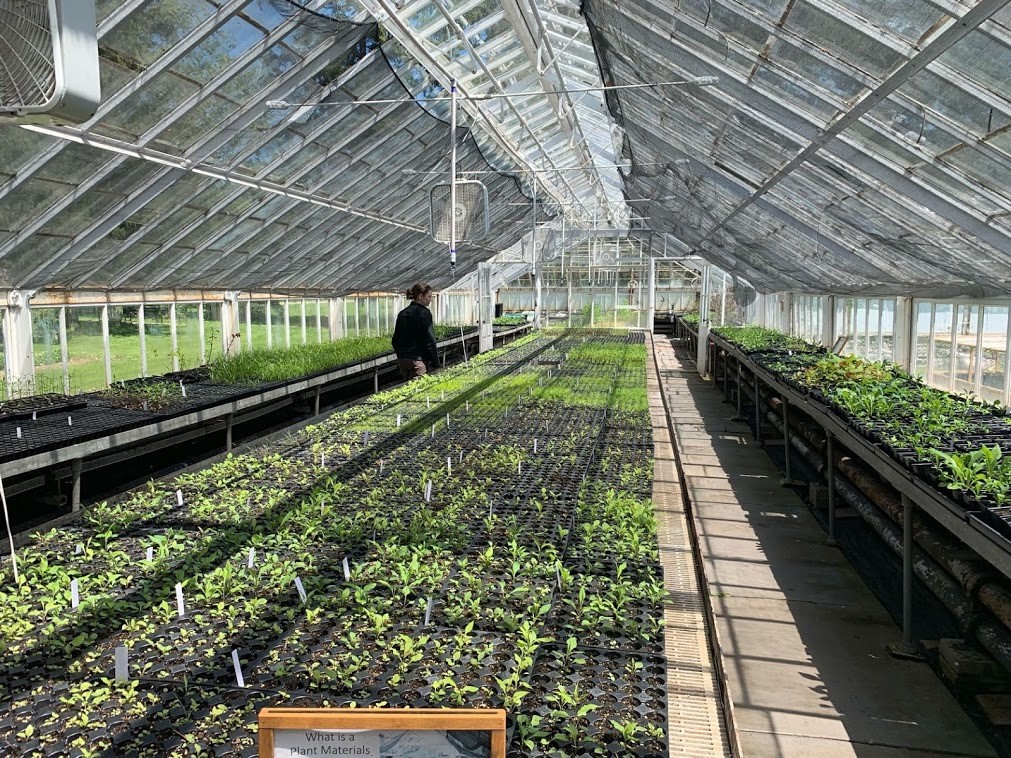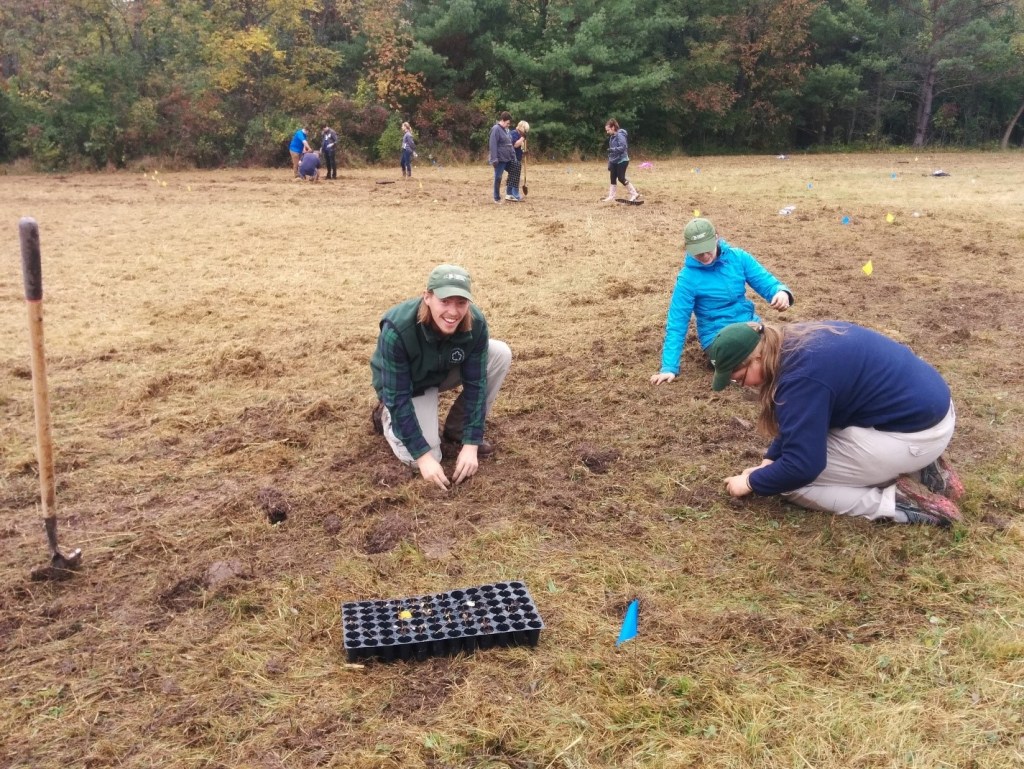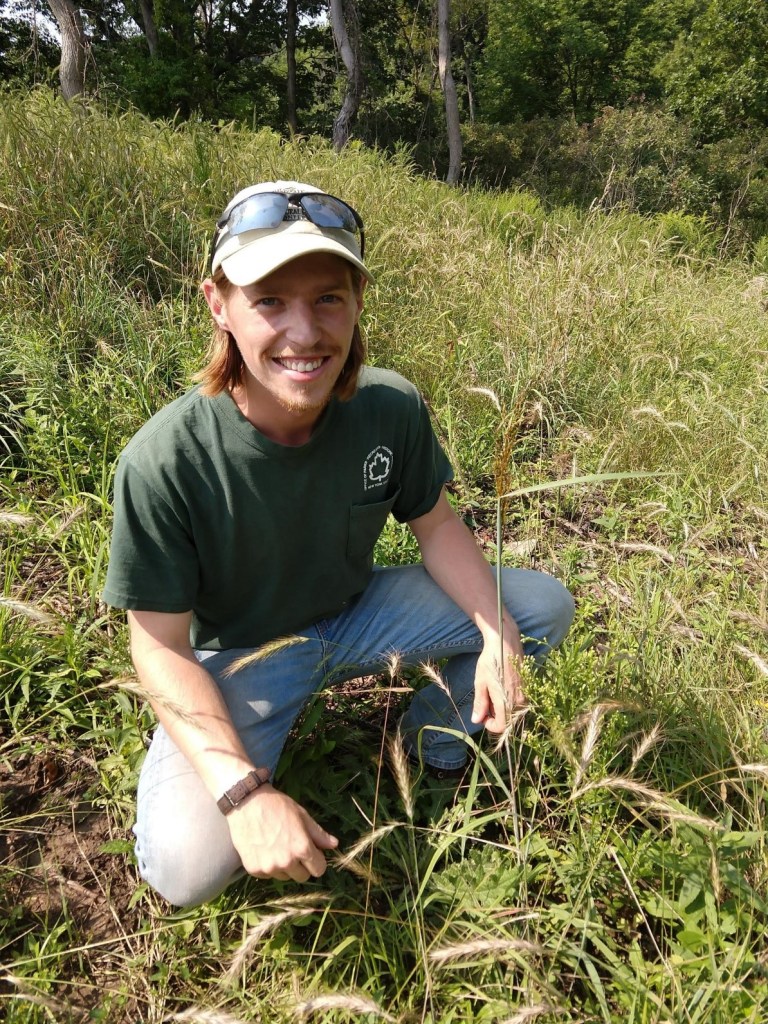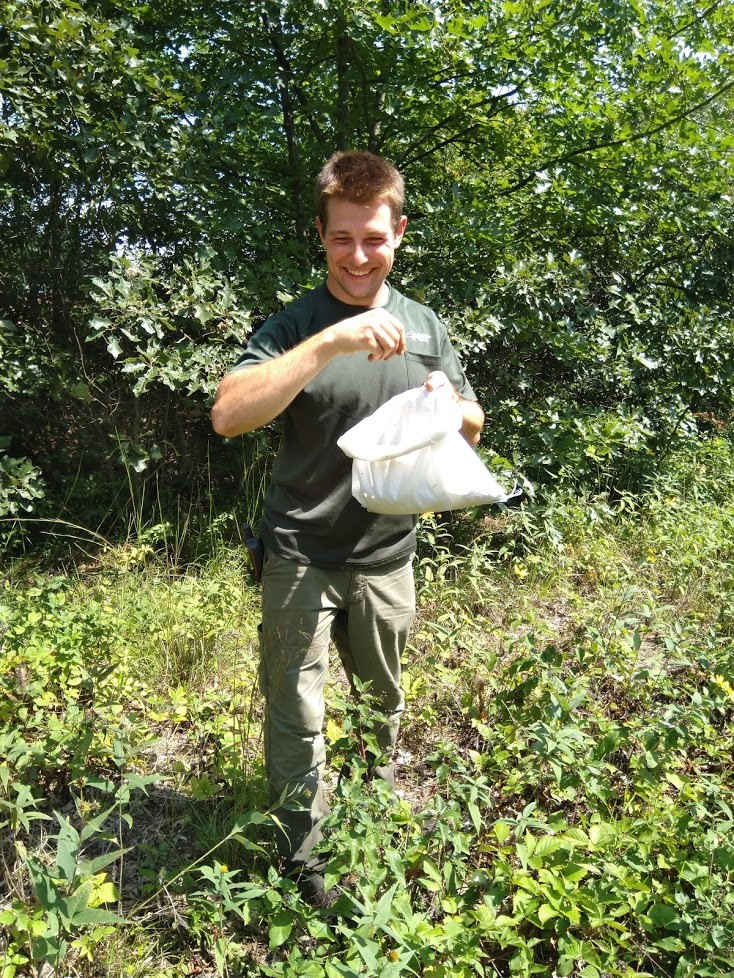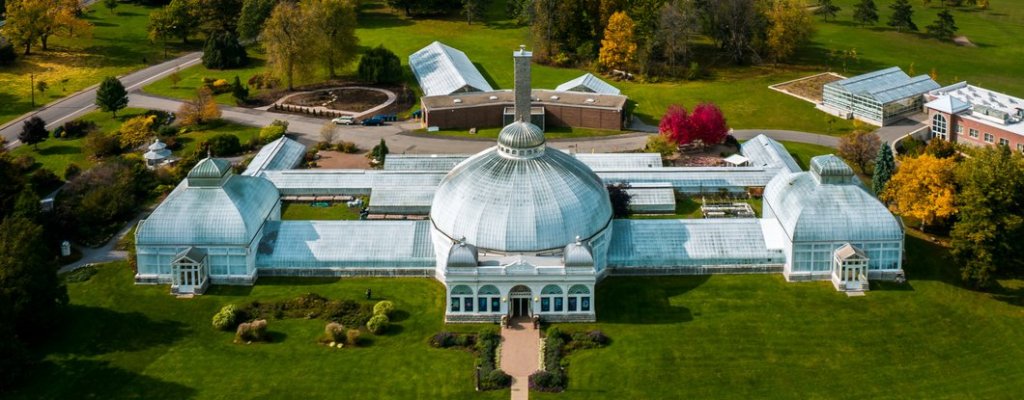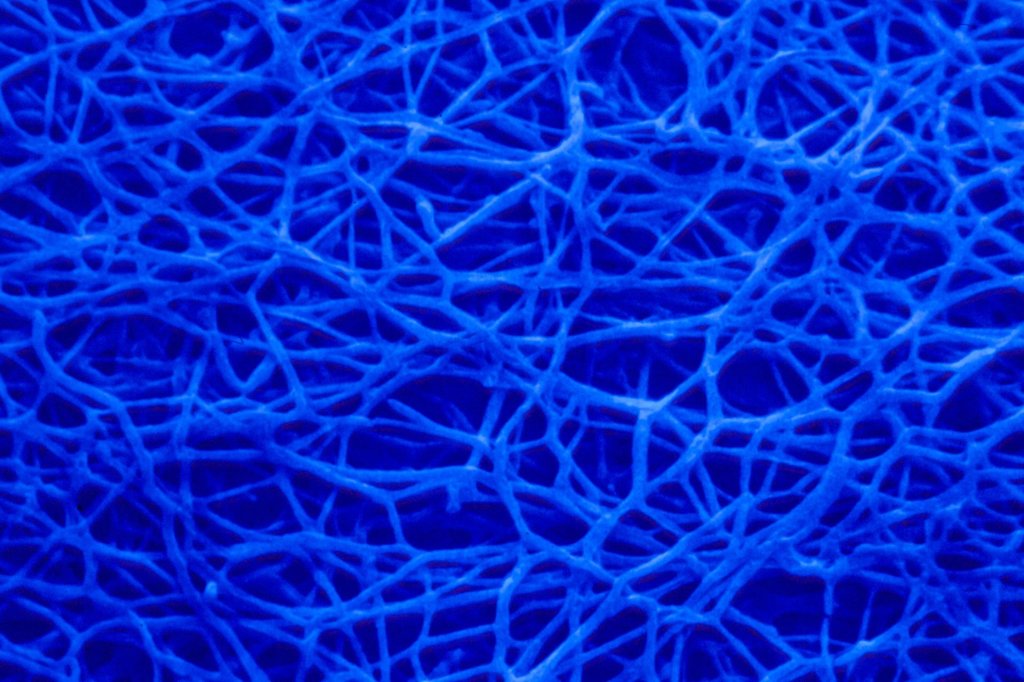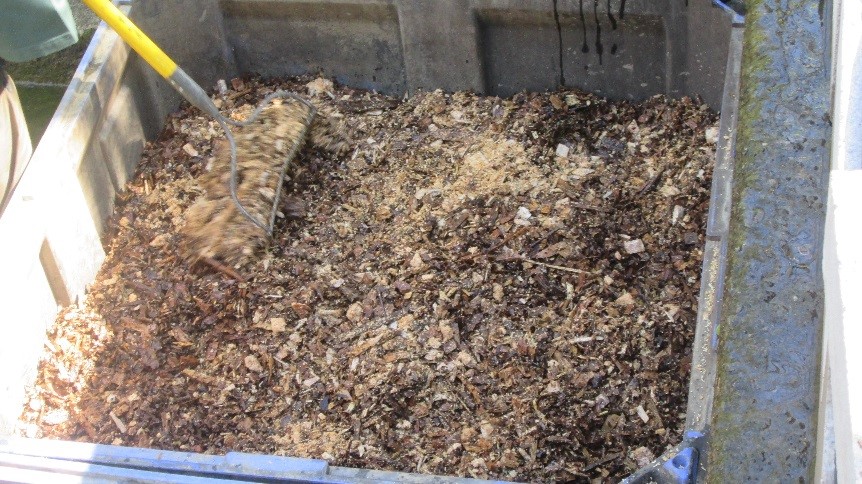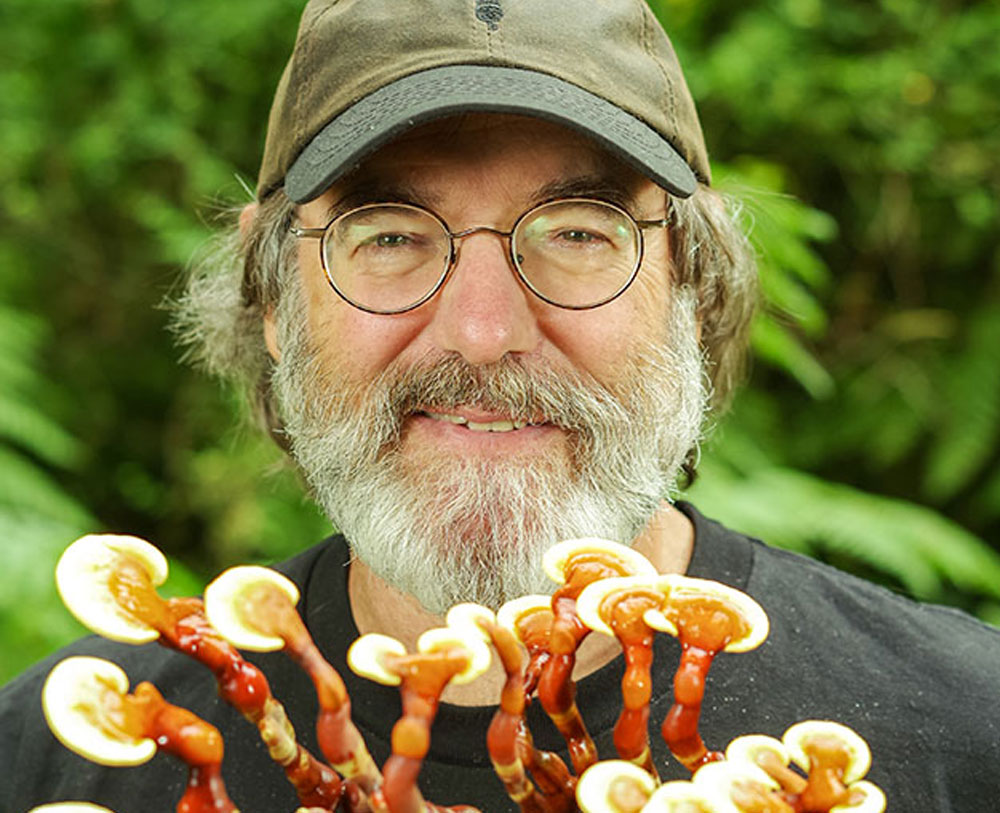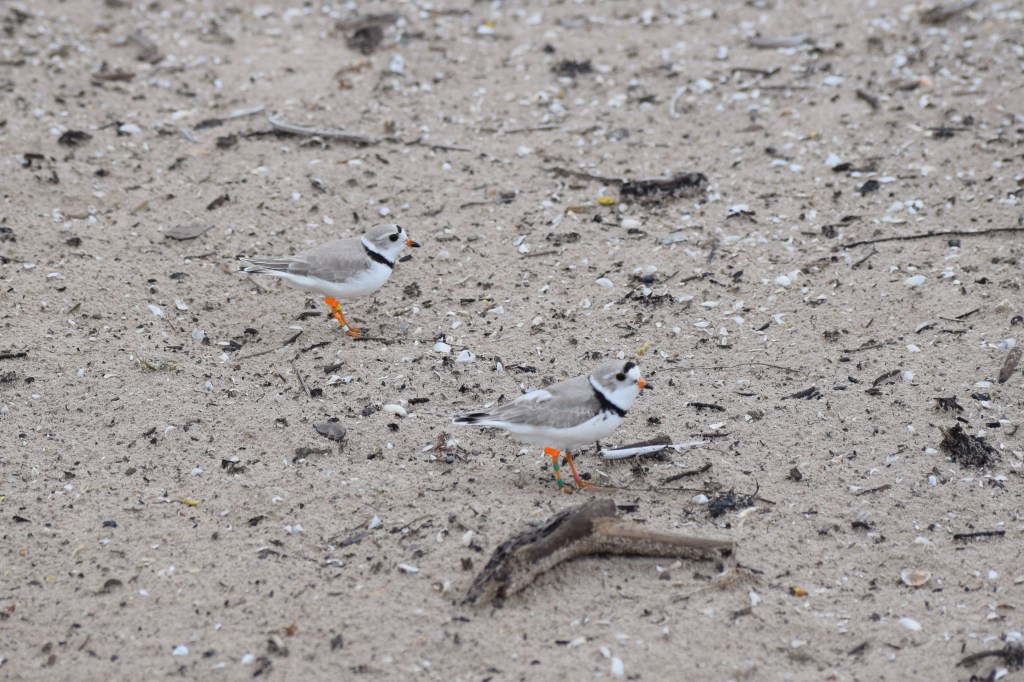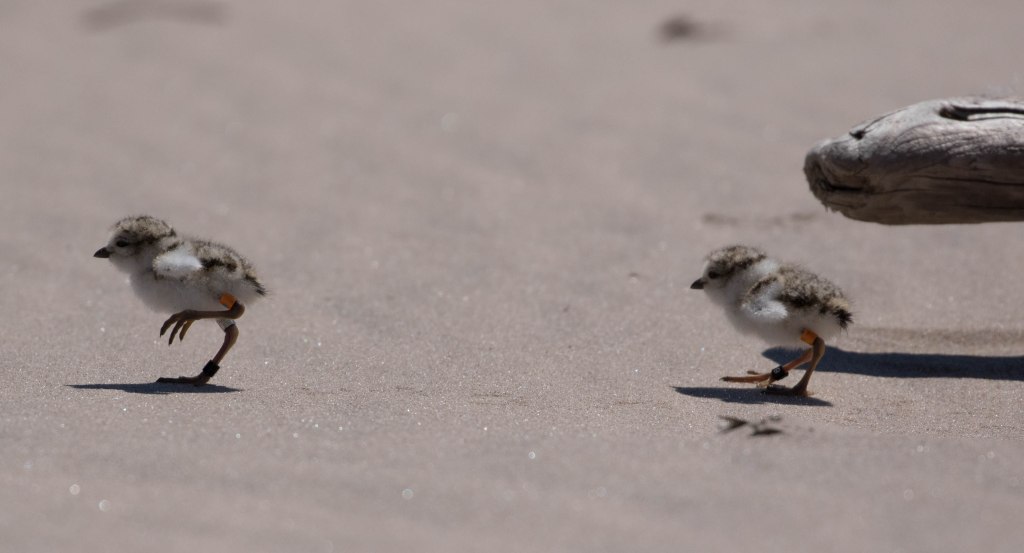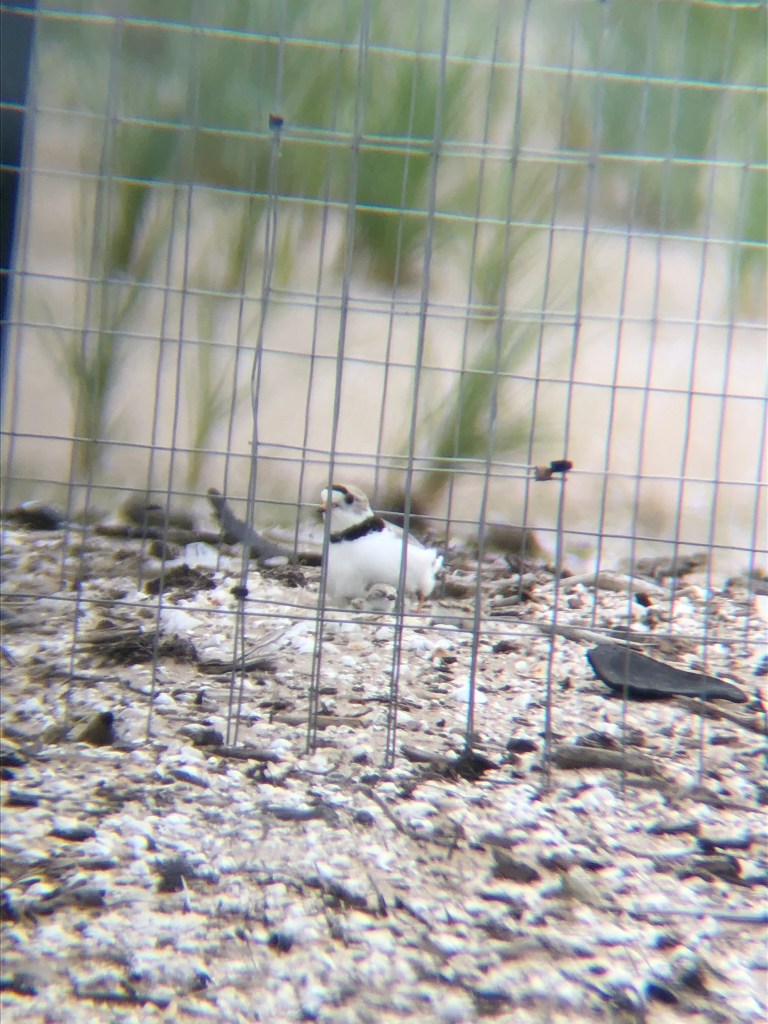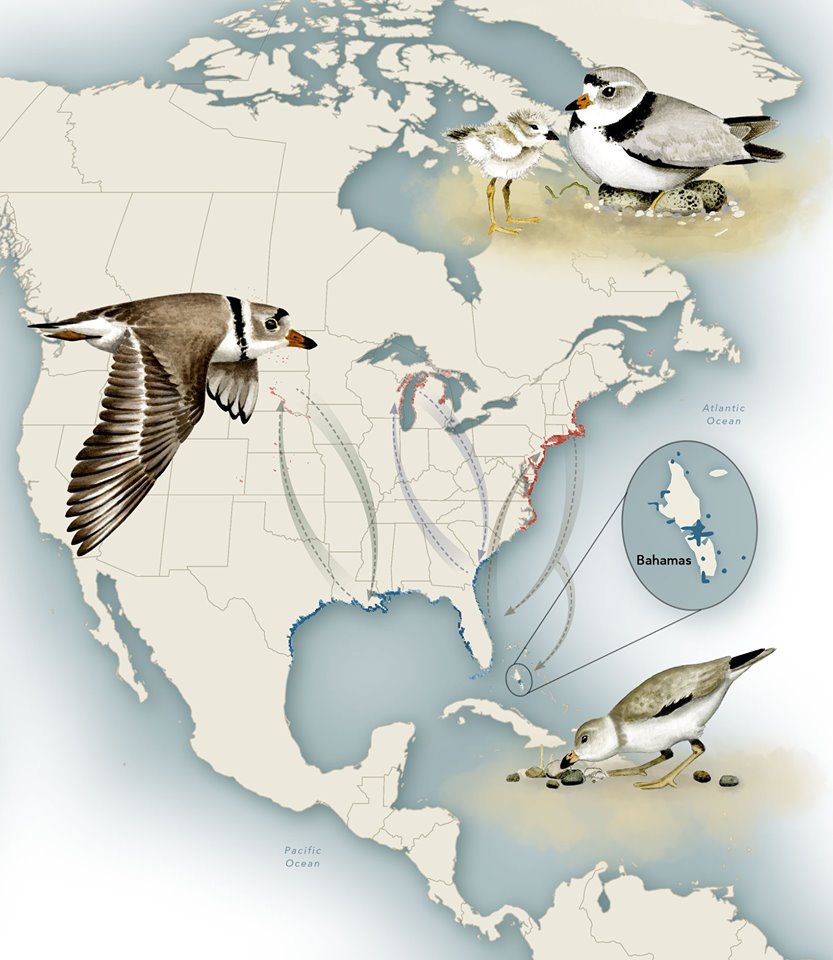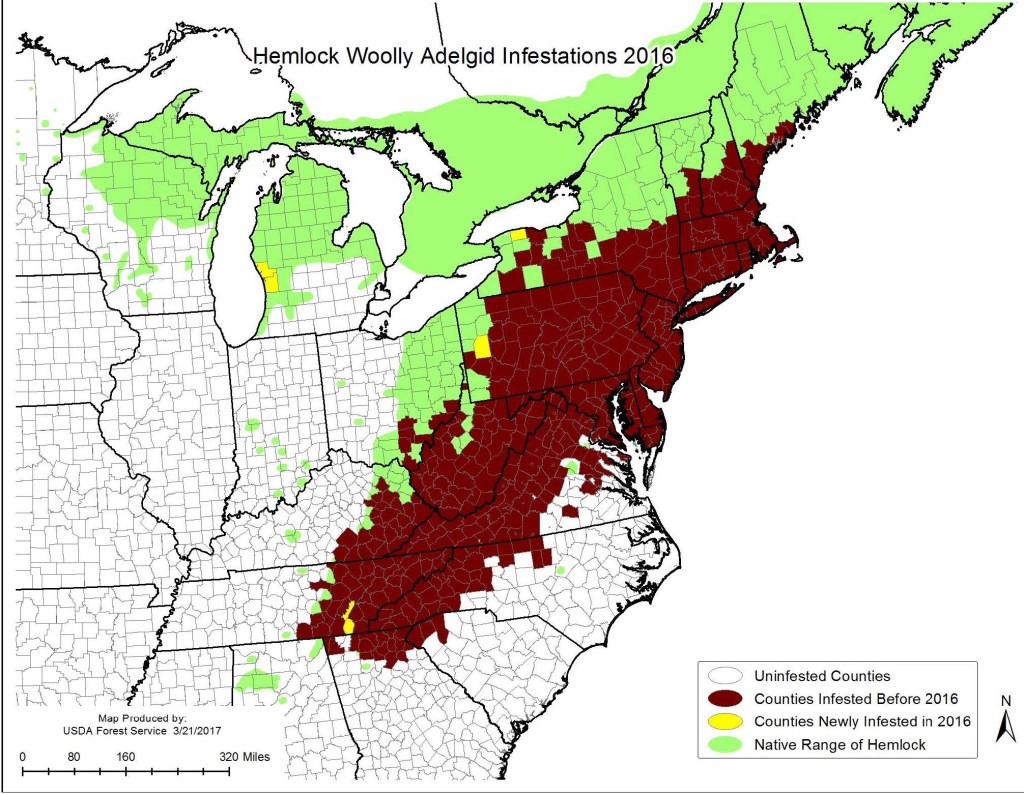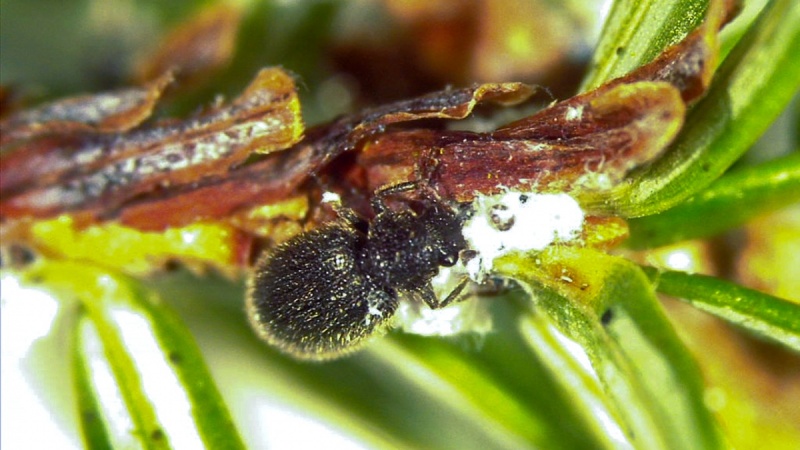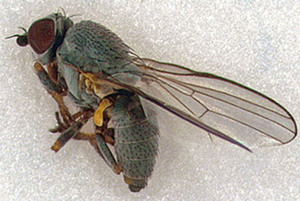State Parks contain a diversity of habitats, from forest and fields, to shrub swamp, marshes and streams. All these landscapes support a wide variety of native plants.
As part of efforts at Parks to restore land and protect biodiversity, it is important to have the right plants for the right habitats in order to support healthy ecological function, provide critical habitat for wildlife and reduce the threat from invasive species.
Such projects require a source of plants that are native to the area. Since it can be difficult to find such plants commercially, the Plant Materials Program was started at Sonnenberg Gardens & Mansion State Historic Park in 2016.
This program was created by the Finger Lakes Environmental Field Team, which was working at Ganondagan State Historic Site in Victor, Ontario County, to restore a grassland habitat critical for endangered birds. And the job called for 200 different species of native plants.
Since then, such plants have been grown in the Sonnenberg’s historic greenhouses in Canandaigua, at the north end of its namesake lake in the Finger Lakes region, to cover parks projects in the eastern part of New York. Many of the Sonnenberg greenhouses had been vacant for years, so this was a perfect match for the facility.
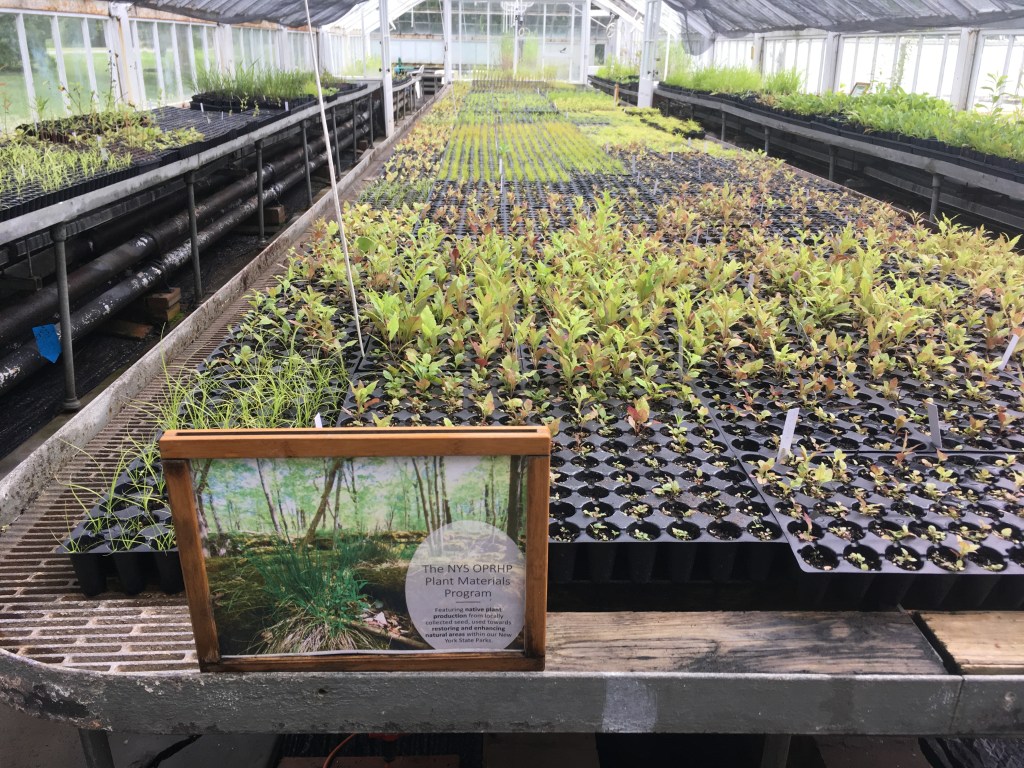
Plant Materials Program Coordinator Brigitte Wierzbicki, Lead Technician David Rutherford and technician Elizabeth Padgett, supported by seasonal staff, partners, and interns, run the program. To fill orders, they identify native species in the field, sustainably collect seeds, propagate those seeds in the greenhouses, and deliver plants back to project sites.
Now in its fourth year, the Ganondagan project aims to recreate the oak savanna grasslands found there in the 1600’s, when the land was managed by the Onöndawá’ga (Seneca) people. This last season, the Plant Materials Program provided more than 5,000 plants towards this project, and over 100 pounds of hand-collected seed have been sown on site.
Currently, the Plant Materials Program provides for environmental stewardship projects across six State Park regions of the state, from the Finger Lakes Region and eastward to the Taconic Region. The program also works with Parks Western District Nursery and its Native Landscape Resource Center, managed by Kevin McNallie at Knox Farm State Park in Erie County, which provides native plantings for the western regions of the state.
Additional guidance on plant suitability for specific habitats or sites is provided by NY Natural Heritage Program.
Why Native Plants?
A wealth of literature points to native plants and species diversity as critical factors for successful restoration. Native plantings are better able to compete against invasive species than non-native plants. Planting more native species also increases both plant and animal diversity. Ensuring that plants are not only native, but regionally appropriate and genetically diverse increases the likelihood that the plantings will be successful and contribute to their local ecosystem.
Plant Materials Program staff search for wild, naturally-occurring populations for each project within the same ecoregion. Ecoregions are zones defined by their plants, soil, geography, geology, climate, and more. Plants that live in the same ecoregion have adaptations that help each species survive in those precise conditions, so seed has the best chance of survival if it is replanted within that zone.
New York State is split into 42 different ecoregions, with each region warranting a different seed collection so that seed is often not shared across projects. In the Sonnenberg greenhouses, plants are not allowed to hybridize (or cross-pollinate) with plants from other regions. Preserving the plant genetics of each ecoregion is important to maintain each unique habitat.
Science of Collecting Native Seeds
Seed collection involves more than just taking a seed from a plant. Our collectors ensure collections aren’t harming the population. Only a small fraction of seed is taken from each plant, so that enough seed remains to support that population, and to serve as food for insects and other animals.
Populations of a plant must be large enough to support seed collection. Areas are monitored before and after collection, and they are not collected from again for multiple years. The conservation of intact ecosystems is more effective than planting and restoring ecosystems, so it is important that seeds are collected in a way that protects existing plant populations.
Measures are also taken to capture genetic diversity, including collecting multiple times a season and using field techniques to collect evenly or randomly across a population. Collectors avoid selecting for specific traits, as that can reduce a population’s ability to adapt, and can in turn negatively impact other populations.
Native Plants Help an Endangered Butterfly
In the Capital Region, the Plant Materials Program collects wildflower seed to support Parks Stewardship staff in restoring rare butterfly habitat. Saratoga Spa State Park is home to the state and federally-endangered, and globally-rare Karner blue butterfly. This small butterfly lives in pitch pine-scrub oak barrens, and during its caterpillar stage, it feeds on only one wildflower: the blue lupine (Lupinus perennis).
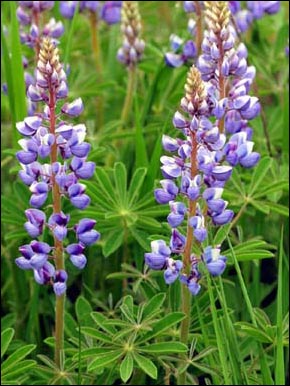

Picking seeds from the right lupine plants is extremely important, as the chemical makeup of lupine has been shown to vary across the range of the species. Introducing a new strain of lupine might be harmful or even toxic for the butterflies. For example, the same species of lupine growing in another state could be different enough from the ones growing at Saratoga Spa State Park that, if planted there, could be toxic to the Karner blue butterflies living in the park.
A 2015 study found that survival and development of the Karner blue was linked to which lupines caterpillars had fed upon. Expanding lupine at Saratoga Spa through local seed is the safest option to protect the unique genetics of both the butterflies and lupine.
New Life for Sonnenberg’s Historic Greenhouses
Each spring, the Plant Materials Program grows a new cycle of plants in Sonnenberg’s historic Lord & Burnham greenhouses. These are greenhouses which date back to the Gilded Age of the early 1900s and reflect the botanical passions of the home’s original residents, Frederick Ferris Thompson and Mary Clark Thompson, two prominent philanthropists.


At the time of construction between 1903 and 1915, the greenhouses at Sonnenberg reflected state-of-the-art technology. Only a handful of other such Lord & Burnham structures survive today, with some major examples found at the New York Botanical Garden in The Bronx, The Buffalo and Erie County Botanical Gardens, the United States Botanic Garden in Washington, D.C., and the Phipps Conservatory and Botanical Gardens in Pittsburgh.
The federal government acquired the Sonnenberg grounds in 1931 and passed it to a not-for-profit preservation organization in 1972. State Parks bought the property in 2005, while the not-for-profit group continues to manage it and raise funds to support the restoration of these historically-significant greenhouses.
This 50-acre estate and its greenhouses, gardens, and Queen Anne-style mansion are all open to the public from May through October. A portion of the greenhouses interprets the legacy of the site, including a palm house, orchid house, and cactus house.
Patrons can tour the greenhouses utilized by the Plant Materials Program and learn about the thousands of plants grown for restoration of native ecosystems. Housing the program at Sonnenberg expands the interpretative value for park visitors and supports the restoration of these historic structures.
During this long winter, know that the next generation of native plants for New York State Parks projects is being nurtured in a historic greenhouse complex that dates to the Gilded Age, and come spring, will be ready to preserve and protect some of our most precious places.

Post by Brigitte Wierzbicki, Plant Materials Program Coordinator
Cover photo by Sonnenberg Gardens and Mansion State Historic Site
Consider Native Species When Planting At Home
- Check if you have natives already coming up in your garden or yard. It is likely that you already have some native plants that are providing habitat, and these will be best adapted to your local ecosystem. Use indentification resources to see what is from NY or New England. Apps like iNaturalist, online guides like GoBotany, or field guides like Newcomb’s (Newcomb’s Wildflower Guide, Lawrence Newcomb) are great resources for getting started.
- Native Plantfinder is a great resource to choose which plants are native to your zip code! It also ranks plants based on the number of native butterflies and moths that can use the plants—meaning you will be bringing in more wildlife into your garden including pollinators and birds. It is still in development and only a small fraction of these will be available commercially, so double check your favorites with what’s available.
- Use the New York Flora Atlas to ensure the plant you’re interested in is native to the state. Even better if it’s native to the county you’re planting in!
- Utilize the New York State Department of Environmental Conservation Saratoga Tree Nursery. The 2020 Seedling Sale is currently ongoing and is an affordable way to purchase native plants and support environmental conservation work in the state.
- Check out the Native Plant Nursery Directory to find your local native plant nursery. Request that your local garden center carries native plants, and ideally, ones that are from New York. Often the native species in nurseries are sourced from outside of New York, or even the southern U.S. These won’t be as well adapted to New York.
- Avoid cultivars of native species. You may find some natives in nurseries with different names signifying they have been bred for different colors or flower shapes. These changes can reduce the ecosystem function of the plants, or even populations beyond your garden if they are able to breed. Our native species evolved with the native pollinators, and changes can make the plants completely unusable for native pollinators.
- Do not collect from the wild for your garden. Taking from the wild can be more damaging to the ecosystem than the benefit that it may bring to your garden. Collecting from the wild is also often illegal. Many factors need to be considered for safe harvests, and many of our plant populations are experiencing declines due to development, habitat fragmentation, invasive species, deer overabundance, climate change, and more. It can be hard to know if the seeds you’re taking will damage the population or remove a critical food source, so don’t take the risk!
References
Bakker, J.D. & Wilson, S.D. (2004) Using ecological restoration to constrain biological invasion. Journal of Applied Ecology, 41, 1058–1064.
Fargione, J.E. & Tilman, D. (2005) Diversity decreases invasion via both sampling and complementarity effects. Ecology Letters, 8, 604–611.
Handel, K. (2015) Testing local adaptation of the federally endangered Karner blue butterfly (Lycaeides melissa samuelis) to its single host plant the wild lupine (Lupinus perennis). (Electronic Thesis or Dissertation).
Hereford J. 2009. A quantitative survey of local adaptation and fitness trade-offs. American Naturalist 173:579-588.
Johnson R, Stritch L, Olwell P, Lambert S, Horning ME, Cronn R. 2010. What are the best seed sources for ecosystem restoration on BLM and USFS lands? Native Plants Journal 11(2): 117-131.
Kline, V.M. (1997) Orchards of oak and a sea of grass. In: Packard, S.; Mutel, C.F., editors. The Tallgrass Restoration Handbook. Washington, DC: Island Press:3-21.
Omernik, J. M. (1987). Ecoregions of the conterminous United States. Annals of the Association of American geographers, 77(1), 118-125.
Plant Conservation Alliance, P. (2015). National Seed Strategy for Rehabilitation and Restoration 2015-2020. Bureau of Land Management. Available at: https://www. blm. gov/programs/natural-resources/native-plant-communities/national-seed-strategy.


